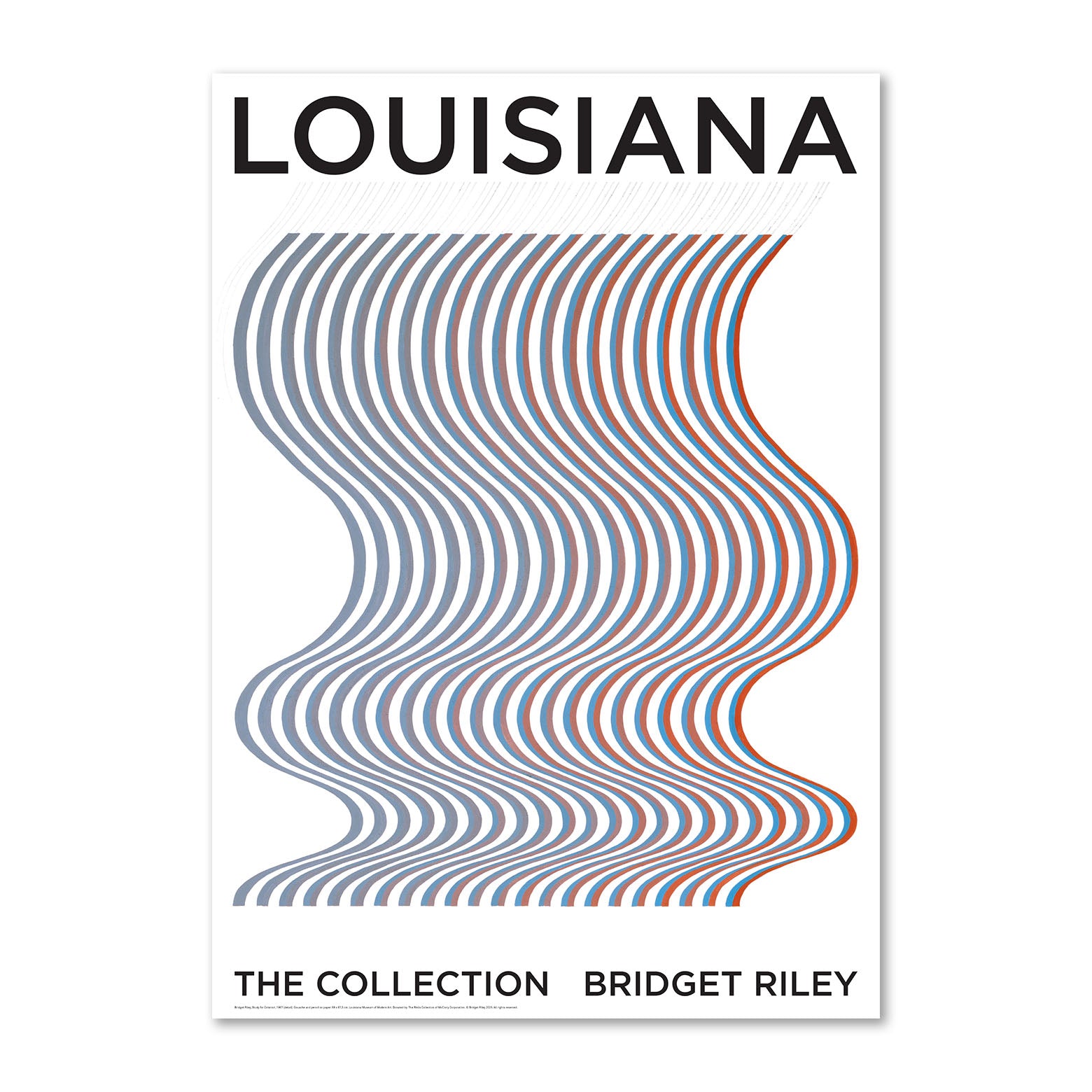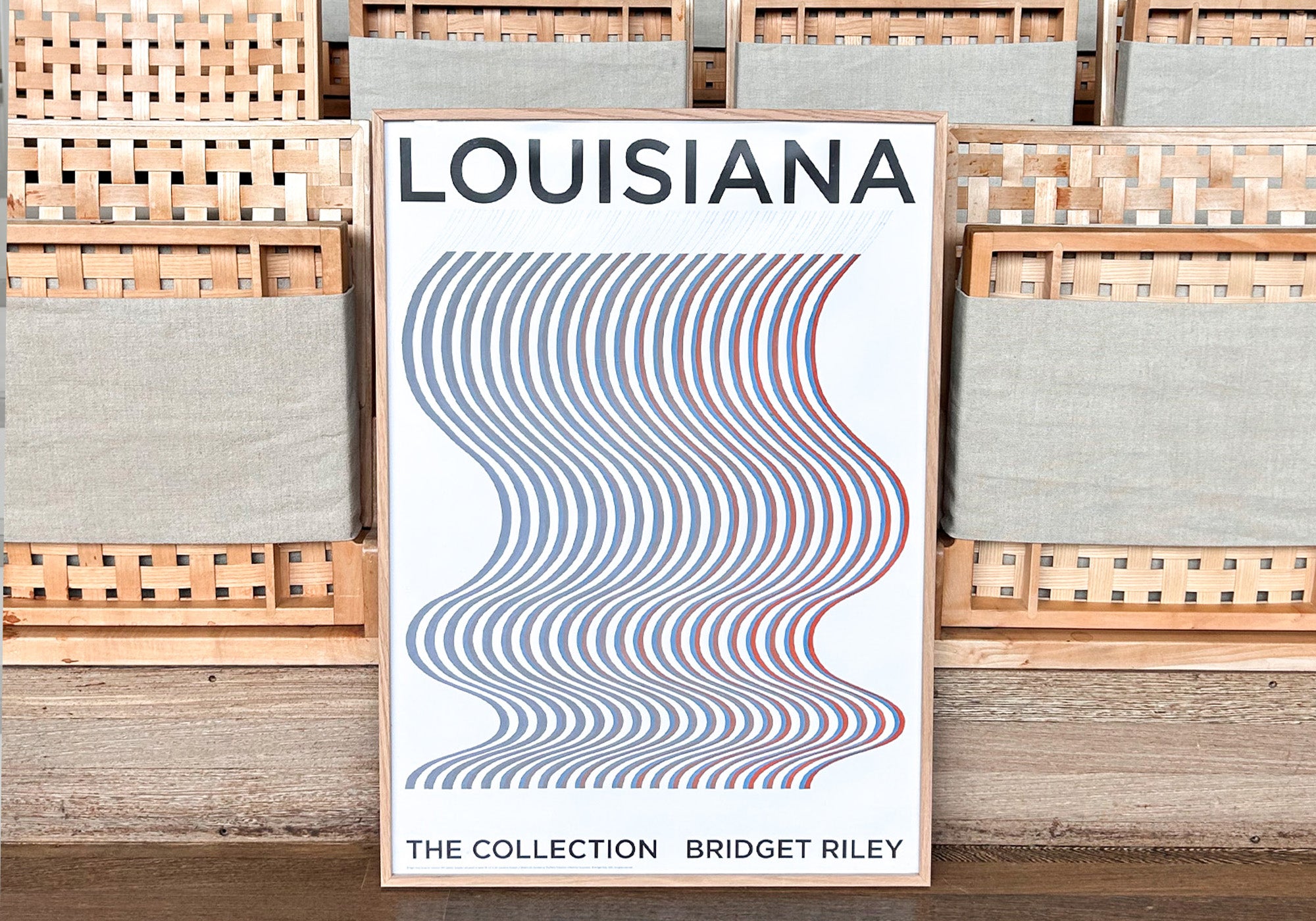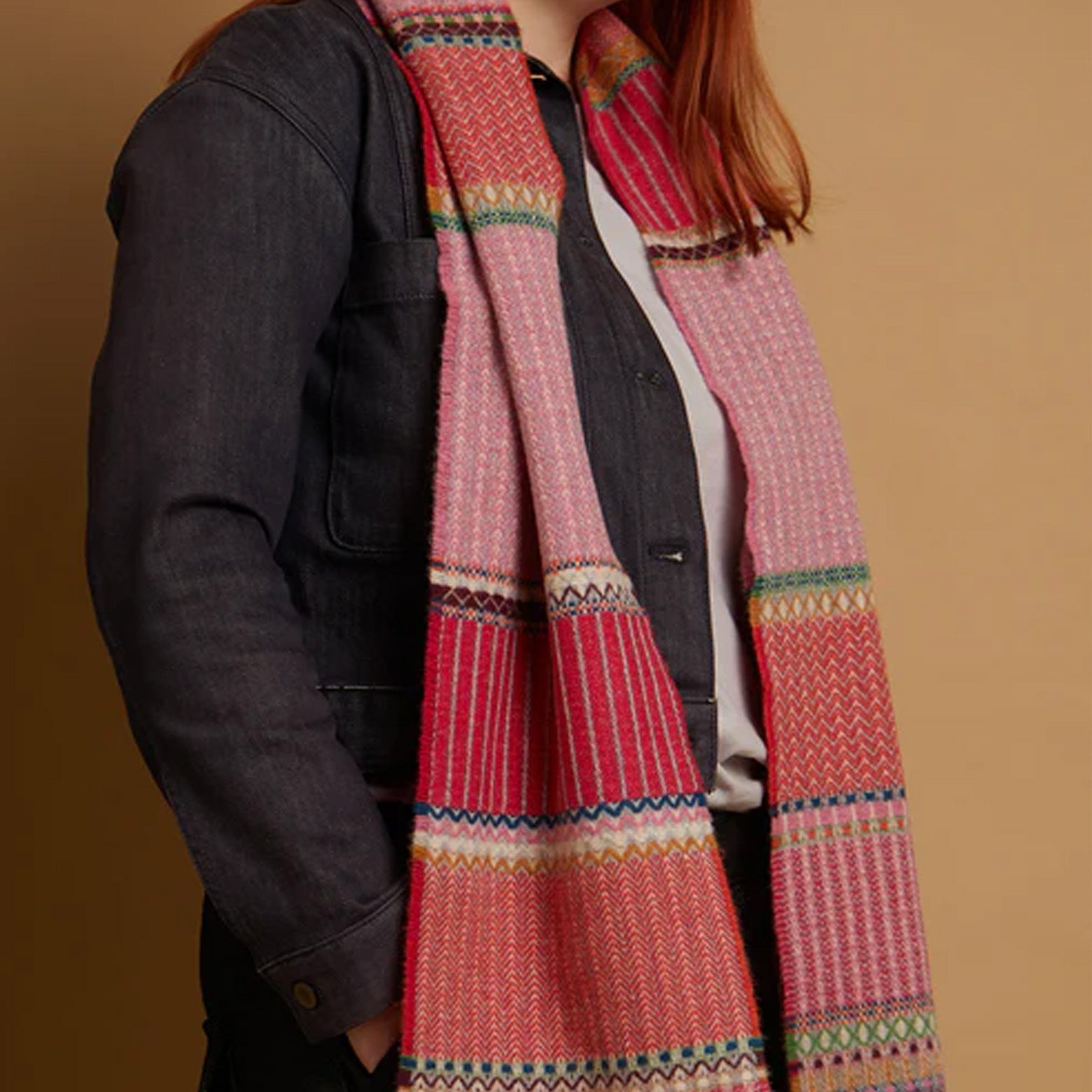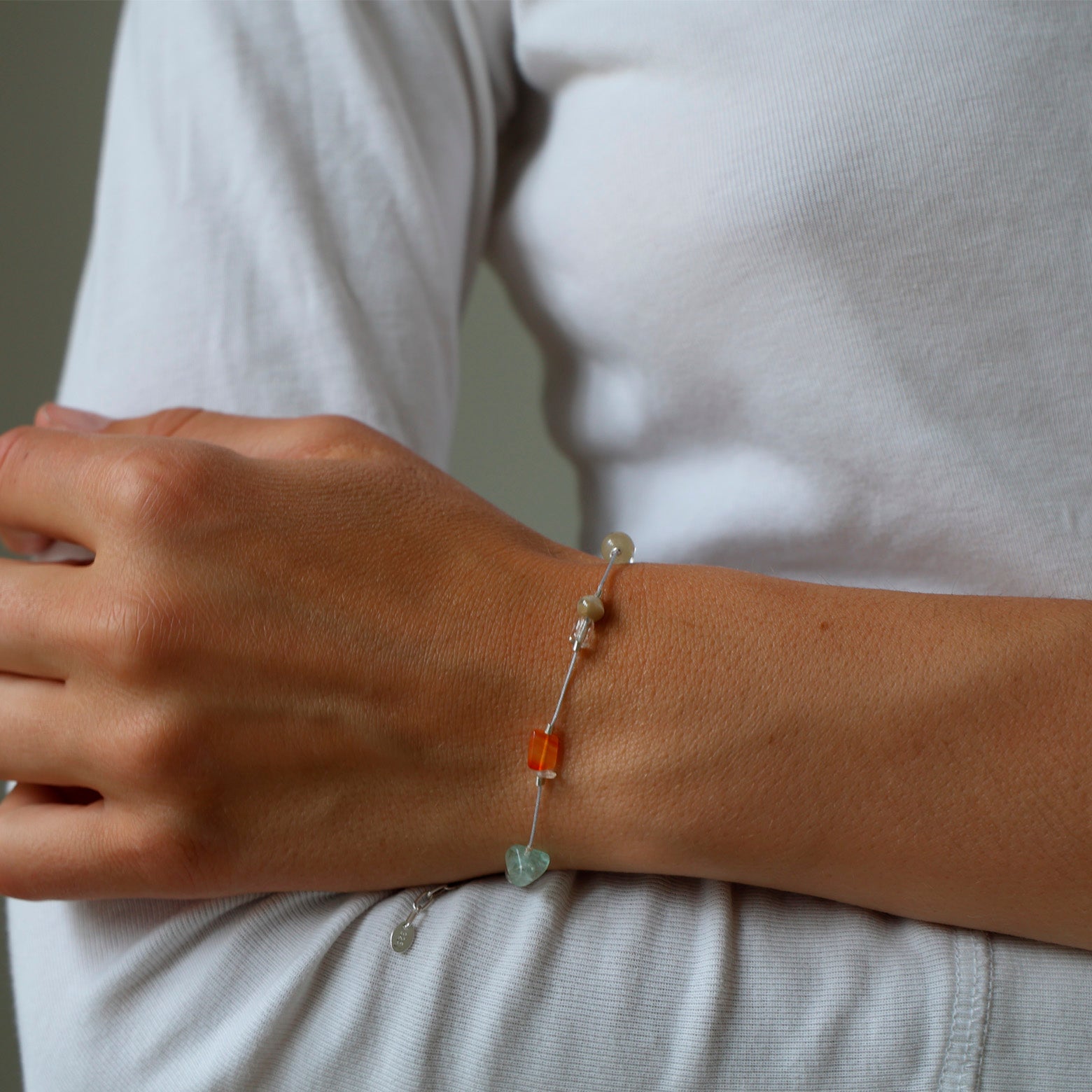
Bridget Riley – Study for Cataract
Choose options

Louisiana Poster with the work Study for Cataract , 1967 by the English artist, Bridget Riley (b. 1931).
Bridget Riley broke through in the early 1960s with a series of black and white paintings and she became a model for a long line of artists who followed.
Riley's images are incredibly simple. She uses simple means, for example often only black and white. But when her images hit the eye, things start to happen because Riley has worked intensely to structure lines and shapes so that they have the greatest possible effect on our perceptual apparatus.
Op Art - Optical art - was an international movement between 1950 and 1970 and existed side by side with other, experimental art movements, especially in the 1960s.
Artists were concerned with formulating expressions that were contemporary. Synchronous with the faith in the future and with the technology and science that emerged from the mid-50s and especially in the 60s. Modular buildings, reflective surfaces, neon signs, flashing lights and dynamic urban spaces. The mechanical aesthetic was explored by the Op Art artists in this pre-digital period. Op Art is aimed especially at our sense of sight. It concerns movements. In the brain via the eyes - that is, as an illusion. Or works of art that move with the help of a motor. Or the movements of the viewer. So we are co-producers.

Materials & Measurements

